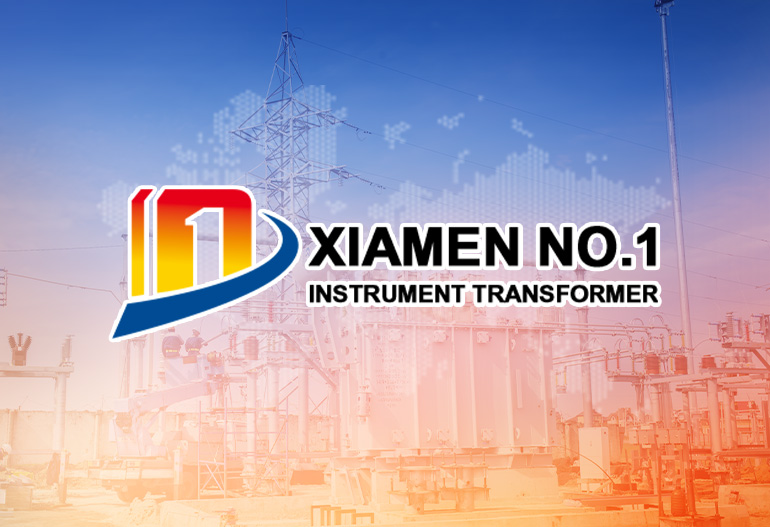Coastal and industrial corrosive environments pose unique challenges to the reliability and longevity of outdoor voltage transformers (VTs). These areas are characterized by:
High salinity levels: Coastal regions experience constant exposure to sea salt spray, which contains sodium chloride (NaCl) and other ionic compounds.
Humidity and moisture: High ambient humidity (often >80% RH) combined with temperature fluctuations leads to condensation on equipment surfaces.
Industrial pollutants: Corrosive gases such as sulfur dioxide (SO₂), hydrogen sulfide (H₂S), and chlorides from industrial emissions accelerate material degradation.
UV radiation and temperature variations: Prolonged sunlight exposure and extreme temperature changes exacerbate coating and insulation deterioration.
For voltage transformers operating in 110kV-500kV transmission grids in such environments, failure due to corrosion can result in:
Insulation breakdown and electrical arcing
Mechanical weakening of structural components
Reduced measurement accuracy and protective relay malfunctions
Unplanned outages and high maintenance costs
The primary mechanism in coastal environments, electrochemical corrosion occurs when:
Saline moisture forms an electrolyte layer on metal surfaces.
A galvanic cell is established between different metals (e.g., steel frames and copper windings) or between metal and impurities.
Anode regions undergo oxidation, releasing metal ions (e.g., Fe²⁺ from steel), while cathodes reduce oxygen or hydrogen ions.
Case Study: A 220kV CVT in a coastal substation showed pitting corrosion on its steel tank after 5 years of operation, with chloride ion concentration in surface deposits exceeding 1,500 ppm.
In industrial zones, acidic gases react with moisture to form corrosive solutions:
SO₂ + H₂O → H₂SO₃ (sulfurous acid), which reacts with iron to form FeSO₃.
H₂S + metal → metal sulfides (e.g., FeS), causing surface scaling and embrittlement.
Chlorine gases (Cl₂) react with water to form hydrochloric acid (HCl), accelerating pitting corrosion.
In humid, oxygen-limited areas (e.g., under poorly ventilated gaskets), microorganisms can:
Produce organic acids (e.g., acetic acid) during metabolism.
Create localized anaerobic environments that promote sulfide formation.
Degrade protective coatings, exposing base metals to corrosion.
Polymeric insulators: UV radiation causes polymer chain scission, leading to surface cracking and water ingress.
Rubber seals and gaskets: Oxidation and chemical attack reduce elasticity, causing leakage and moisture intrusion.
Epoxy resins: Acidic environments hydrolyze epoxy bonds, decreasing mechanical and electrical strength.
| Component | Traditional Material | Corrosion-Resistant Alternative | Advantages |
|---|
| Tank and frame | Carbon steel (Q235) | Stainless steel (316L/317L) or aluminum alloys | High chloride resistance, low maintenance |
| Fasteners and bolts | Carbon steel with zinc plating | Stainless steel (A4-70) or titanium alloys | Prevent galvanic corrosion, high tensile strength |
| Bushings | Porcelain | Silicone rubber composite (with hydrophobic coatings) | Lightweight, UV-resistant, self-cleaning |
| Winding conductors | Oxygen-free copper | Silver-plated copper or corrosion-resistant alloys | Improved conductivity and surface protection |
Primer layer: Zinc-rich epoxy (80-100μm) for cathodic protection.
Intermediate layer: Polyurethane or epoxy mastic (150-200μm) for moisture barrier.
Topcoat: Fluorocarbon (PVDF) or silicone-based coatings (50-80μm) for UV and chemical resistance.
Hot-dip galvanizing: Immersing steel parts in molten zinc (85-120μm thickness) for uniform coverage.
Electroless nickel plating: Provides a non-porous, corrosion-resistant layer (5-15μm) on complex geometries.
Conversion coatings: Chromate or trivalent chromium treatments for aluminum components to form a passive oxide layer.
Double-seal gasketing systems: Primary EPDM gasket + secondary silicone gasket with desiccant chambers.
Positive pressure ventilation: For critical transformers, maintaining 5-10Pa overpressure with filtered air.
Drainage features: Sloped surfaces and weep holes to prevent water pooling.
Sacrificial anodes: Magnesium or zinc anodes attached to tank surfaces for galvanic protection.
Corrosion coupons: Installed near VTs to monitor local corrosion rates.
Online sensors: pH, humidity, and chloride concentration sensors integrated into the monitoring system.
Capacitor units: Encased in stainless steel housings with hermetic seals.
Coupling capacitors: Surface-treated with hydrophobic coatings to repel salt deposits.
Pressure compensation systems: Nitrogen-pressurized tanks to prevent moisture condensation.
A 500kV CVT deployed in a South China Sea platform used:
316L stainless steel tank with PTFE-lined interior
Silicone rubber surge arresters with self-cleaning properties
Automated flushing system for external insulators (activated by salt deposit sensors)
Service life extended from 8 to 15 years compared to standard designs.
Oil-filled tanks: Modified mineral oil with corrosion inhibitors (e.g., benzotriazole).
Core materials: Grain-oriented electrical steel with epoxy-phenolic insulation coatings.
Bushing insulators: Hybrid porcelain-silicone designs with anti-fogging agents.
Non-metallic construction: Fiber optic sensors and polymer housings eliminate electrochemical corrosion.
Immunity to electromagnetic interference (EMI): Reduces reliance on metal shielding.
Low maintenance: No oil or gas systems, minimizing leakage risks.
Elevation and drainage: Install VTs on raised platforms (≥1.5m above ground) with gravel beds for drainage.
Windbreak and shielding: Use concrete barriers or anti-corrosion screens to reduce direct salt spray.
Electrical grounding: Isolated grounding networks to prevent stray current corrosion.
Visual checks: Monthly inspections for coating degradation, rust spots, and seal damage.
Ultrasonic thickness testing: Annually measure tank wall thickness to detect corrosion thinning.
Oil analysis: Quarterly testing for water content, acidity, and metal ion concentrations.
Coating refurbishment: Re-apply topcoats every 3-5 years in severe environments.
Desiccant replacement: Semi-annual replacement of silica gel in breather systems.
Anode replacement: Sacrificial anodes replaced when 50% consumed.
Drone-based inspections: Thermal imaging to detect hotspots and UV imaging for coating defects.
IoT sensors: Wireless corrosion rate monitors (e.g., ER-probes) transmitting data to SCADA systems.
Predictive analytics: Machine learning models forecasting corrosion trends based on environmental data.
IEC 60068-2-11: Salt mist testing for electrical equipment.
ASTM B117: Standard practice for salt spray (fog) testing.
NACE SP0176: Corrosion control of steel fixed offshore structures.
GB/T 4797.6: Corrosive classification of atmospheric environments in China.
| Cost Element | Standard VT (110kV) | Corrosion-Resistant VT (110kV) | Life Cycle Savings over 20 Years |
|---|
| Initial purchase cost | $150,000 | $220,000 (47% higher) | - |
| Maintenance costs (10 years) | $80,000 | $35,000 (56% lower) | +$45,000 |
| Replacement costs (20 years) | $150,000 (1 replacement) | $0 (no replacement needed) | +$150,000 |
| Unplanned outage costs | $120,000 (2 outages) | $10,000 (negligible) | +$110,000 |
| Total net savings | - | - | $305,000 |
AI-driven predictive maintenance platforms integrating environmental data and VT condition monitoring.
Self-adjusting protective systems (e.g., electroactive polymers that change permeability based on humidity).
Outdoor voltage transformers in coastal and corrosive environments require a multi-faceted approach to corrosion protection, combining material innovation, advanced coatings, and intelligent maintenance. By investing in corrosion-resistant designs, utilities can significantly reduce lifecycle costs while ensuring grid reliability. As environmental regulations tighten and offshore/industrial grid expansion continues, the development of next-generation VT technologies—such as nanocomposite insulators and fully automated corrosion monitoring—will play a pivotal role in shaping the future of high-voltage infrastructure.
Key Takeaways:
Corrosion protection is not a luxury but a necessity for VTs in harsh environments.
A combination of material selection, coating systems, and design features provides the most robust solution.
Proactive monitoring and predictive maintenance are essential to maximizing asset lifespan.



